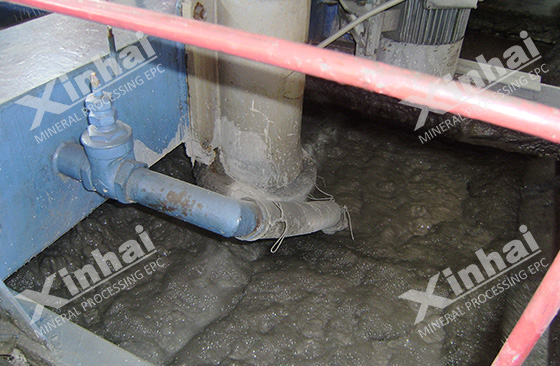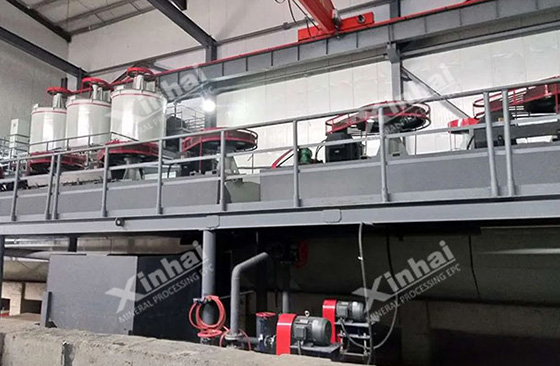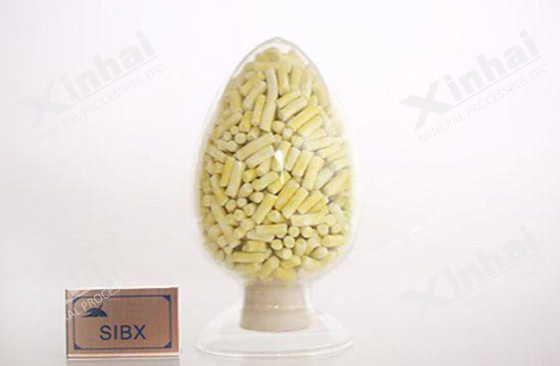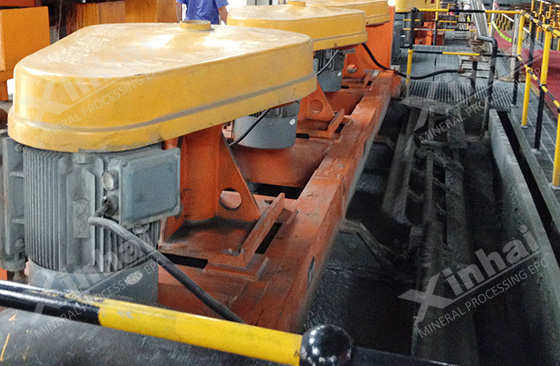
With the development of industry and economy, the demand for zinc metal in various industries is increasing year by year, while the amount of easily-selectable zinc ore resources is decreasing, so it is necessary to develop and utilize complex and difficult-to-select zinc resources. Iron sphalerite is a zinc sulfide mineral, and its selectivity is worse than sphalerite, which brings certain difficulties to the recovery of concentrates and associated rare and precious metals. Understanding the influencing factors in the ferro-zinc blend mineral processing process can improve the mineral processing efficiency by improving and perfecting the mineral processing technology. This article will summarize the influencing factors of the iron sphalerite mineral processing process from six aspects.

The iron content of iron sphalerite will affect its floatability. The higher the iron content, the worse the floatability. Due to the different types of iron sphalerite, the iron content, floatability and difficulty in separation are inconsistent, so the flotation effects and indicators vary greatly. The separation of sphalerite and pyrite is more difficult than the separation of sphalerite and pyrite. Therefore, in the flotation process, there must be a process, chemical system and process structure suitable for the mineral characteristics. In addition to affecting the floatability, the amount of iron contained in iron sphalerite also affects its magnetic strength. The strength of its magnetism is proportional to the iron content. The higher the iron content, the stronger the magnetism.
Polymetallic sulfide ores containing iron sphalerite can be separated by three processes: mixed flotation, preferential flotation and equal flotation.

Mixed flotation: According to the sequence of flotation, it can be divided into two categories: full mixed flotation and partial mixed flotation. Total mixed flotation is to flotate all copper, lead, zinc, sulfur, etc., and then perform a single separation. In partial mixed flotation, copper, lead and zinc are first mixed and flotated, and then sulfur is selected, or zinc and sulfur are first mixed and flotated, and then flotated separately. The sorting effect is often related to the quality of zinc and sulfur sorting.
Priority flotation: copper, lead, etc. are flotated, then zinc is selected, and finally sulfur is selected. Using the preferential flotation process, the pyrite on the surface of the ore after grinding can be effectively suppressed. Compared with mixed flotation, preferential flotation is more suitable for the separation of zinc and iron sulfide ores. In actual production, the specific flotation process should be determined according to the properties of the ore.
The particle size of iron sphalerite is closely related to its floatability. Too coarse or too fine iron sphalerite will affect its floatability. For example, too coarse sphalerite will cause the loss of zinc and indium, and will also affect the flotation performance between sphalerite and pyrrhotite. It will be difficult to separate zinc and sulfur, and gangue minerals will also enter the zinc concentrate. , reduce the quality of concentrate. In order to eliminate the influence of too coarse or too fine iron sphalerite, the classification efficiency during the mineral processing process should be improved. The spiral classifier used in the mineral processing plant mainly separates according to particle density, and particle size is a relatively minor factor. At the same time, sulfide ores are mostly heavy minerals, so it is difficult for the spiral classifier to classify these minerals according to particle size, so generally classification equipment such as high-frequency fine screens will be used to improve classification efficiency.

Due to the poor natural floatability of sphalerite, the prerequisite for its flotation is the quality of activation. The activator of iron sphalerite can be copper, silver, cadmium and other ions, among which copper sulfate is a commonly used activator. These metal cations with different radii can quickly perform equivalent equivalent exchange adsorption with zinc ions in the surface lattice of ferrite, thereby improving the floatability of ferrite. The activation effect of copper sulfate is related to the iron content of iron sphalerite.
The adjuster used in the flotation of lead-zinc sulfide ores and the inhibitor of iron sulfide minerals is generally lime, or lime is used in combination with other chemicals. Ferrite sphalerite is relatively sensitive to lime. An appropriate amount of lime has no inhibitory effect on sphalerite activated by copper ions, but excessive lime has a significant inhibitory effect on sphalerite activated by copper ions. Because iron sphalerite has obvious characteristics of sulfide minerals, attention should be paid to the amount of lime used during flotation.

The flotation pH value of sphalerite activated by copper ions is lower than the slurry pH value of sphalerite activated by copper ions. Generally, the pH value of sphalerite cannot exceed 11. If the pH value reaches 12, 80% of the sphalerite in the ore will be inhibited, and the recovery rate will drop significantly.
In order to effectively separate iron sphalerite and pyrite, in addition to adopting a suitable flotation process and controlling the pH value of the slurry, a collector with good selectivity should also be used. Generally speaking, the effect of using mixed collectors (such as mixed collectors based on diesel and supplemented by butyl xanthate) is better when flotation of iron sphalerite, while using non-polar collectors and anionic collectors The effect is better when used together. The use of fatty acid-based combined collectors can enhance the hydrophobicity of the sphalerite surface and increase the recovery rate of zinc. In addition, zinc-selecting mixed collectors based on fatty acids have good selectivity for sphalerite.
The above are the six aspects of knowledge in the iron sphalerite mineral processing process. In actual production, there will be other factors that affect the mineral processing effect. Therefore, Xinhai Mining recommends conducting ore beneficiation tests and formulating appropriate beneficiation processes and equipment based on the characteristics of the ore, which can improve the beneficiation effect and concentrate recovery rate, improve resource utilization, and improve the economic benefits of the dressing plant.
To find out more about our products and solutions, please fill out the form below and one of our experts will get back to you shortly.